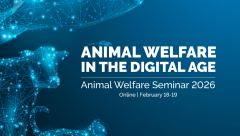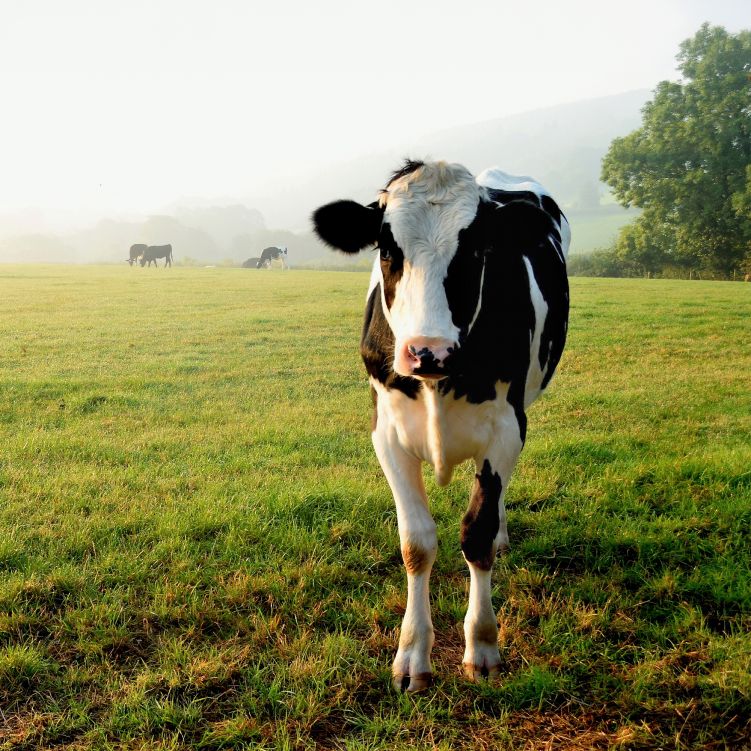There’s been a lot of debate recently about the use of virtual fencing to manage livestock, particularly cattle. While the controversial technology was previously restricted from use in most states due to animal welfare concerns (with exceptions for research purposes), growing pressure from the agriculture industry has led the NSW and Victorian governments to announce plans to change current laws to allow its use. This move means NSW and Victoria will join QLD, WA and Tasmania in allowing commercial farmers to use virtual fencing to supervise and control their cattle. And now with South Australia also reviewing their legislation, they may not be far behind.
Virtual fencing certainly has the potential to improve how farms are managed, and to lessen the amount of labour required for farmers; but there remain serious concerns about the cost to the animals involved. Using electric shocks on animals raises serious ethical and welfare concerns that should not be brushed over.
How it works and the cause for concern
The aim of virtual fencing is to remotely map and control grazing livestock without the use of fixed fences. Instead, cattle are fitted with GPS collars which release an audio cue when the animal approaches an invisible boundary, and an electric shock if they reach the boundary.
Some virtual fencing collars can also be used for virtual herding, that is, to move cattle from one location to another. This can be done using another cue such as vibration, which is a signal for the animal to move forward. If the animal does not respond in the desired way to the vibration cues, they receive an electric shock. Virtual herding adds another layer of difficulty to what cattle already need to learn, to avoid getting shocked.
One of the main welfare concerns is that for virtual fencing technology to be effective, the shock must be unpleasant enough that cattle will actively try to avoid it. While the cattle are learning to adapt to the technology, they won’t (yet) know how to avoid getting shocked - which is likely to cause mental stress, in addition to the unpleasantness of the shock itself. The collars themselves can also cause discomfort and even injuries to animals’ skin if not designed or fitted correctly.
Another welfare concern is that being managed by a shock collar connected to an invisible boundary makes it difficult for cattle to predict changes in their routine, or to feel a sense of control while they are learning to adapt to the technology. This can lead to anxiety and psychological stress. As the virtual fence is not visible, it may be more difficult for some individuals to learn compared with an electric fence, as there are no visual cues to guide them. Some cattle start to learn how to avoid electric shocks by responding to audio cues within a day, while others may take longer to learn. Studies have shown a large variation in the number of shocks individual animals receive, and some animals continue to struggle to adapt even after the learning period is considered complete.
Like any technology, there’s also the possibility of the equipment malfunctioning which can have negative consequences for cattle welfare. One trial reported that a GPS error resulted in one cow receiving 9 audio cues and 2 electric shocks despite the cow responding correctly to the cues. There’s also the risk of the technology being accidentally or deliberately misused.
The potential benefits of virtual fencing
The agriculture industry has raised an enthusiastic argument for embracing virtual fencing technology.
One key argument is the potential to improve livestock management by allowing animal behaviour and location monitoring in real time. However, technology can fail, and virtual fencing technology can only monitor some aspects of animal behaviour. It should not be used as a substitute for regular in person observation and monitoring of animals by an experienced stockperson. In addition, other monitoring technologies can do this, without giving electric shocks to animals.
Another argument for virtual fencing is the reduction in time and labour by enabling tasks like herding to be done virtually instead of physically by farm employees. While an improvement for cattle welfare could be argued if the technology is replacing other stressful herding methods such as using dogs or quad bikes, using shocks to control cattle is a similar negative experience for them and unlikely to be better for welfare than the low-stress stock handling techniques that are currently recommended (e.g., quiet slow handling on foot).
One last argued benefit is that virtual fencing removes the need for, and cost involved in, maintaining physical fences; and it could also reduce the risk for wildlife getting caught in more commonly used wire fencing. However, preventing wildlife entanglements with fences could also be mitigated by improving design.
Efficiency shouldn’t come at the cost of the animal’s welfare
The RSPCA has significant ethical and animal welfare concerns about the use of devices that are designed to electrically shock animals.
These are aversive and punishment based and are out of step with best practice animal training principles. This is a technology that was previously banned in several states because of the animal welfare concerns inherent to electrically shocking an animal.
While new technologies such as virtual fencing can offer promising benefits, it’s important to remember they are never a replacement for good husbandry, management and training practices, which have been shown time and again to offer the best protection for animals from pain, injury, suffering and distress.
New technologies may help improve efficiency and productivity; but above all, animal welfare must remain the foremost consideration.







